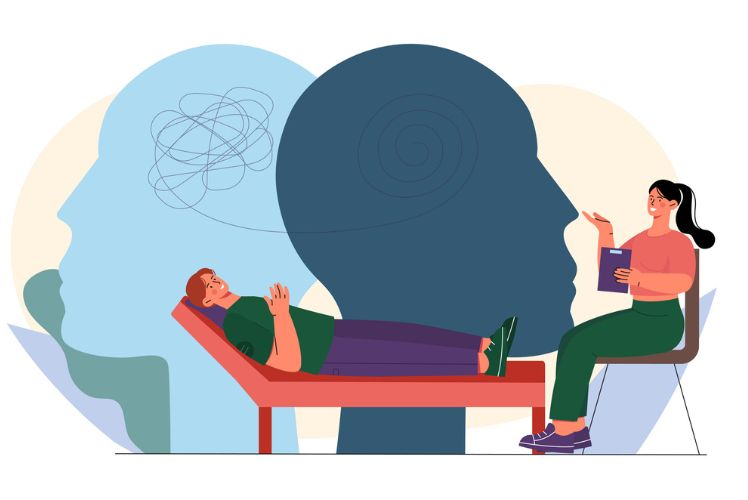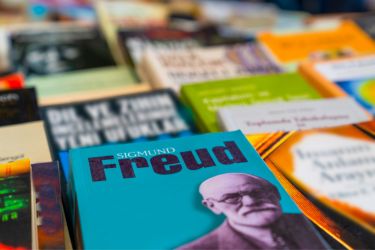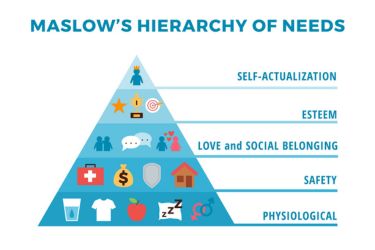Gestalt therapy focuses on the present moment and helps people become more aware of themselves and their feelings. This type of therapy was created in the 1940s by Fritz Perls and has helped millions of people work through their problems. The main idea behind Gestalt therapy is that we are whole people - mind, body, and soul - and we can understand ourselves best by paying attention to what happens right now.
We often get stuck thinking about the past or worrying about the future. Gestalt therapy takes a different approach by asking us to notice what we feel and think in this exact moment. This method can help with many problems like anxiety, depression, and relationship troubles.
The therapy uses special techniques to help people explore their feelings and behaviours. We will look at how this therapy works, who created it, and what makes it different from other types of counselling. You will also learn about the main ideas behind Gestalt therapy and how it might help you or someone you care about.
Key Takeaways
- Gestalt therapy focuses on present-moment awareness and treats people as complete beings rather than separate parts
- The therapy was developed by Fritz Perls in the 1940s and uses experiential techniques to help clients explore their feelings and behaviours
- This approach can effectively treat anxiety, depression, and relationship issues by emphasising personal responsibility and self-acceptance
Core Principles of Gestalt Therapy
Gestalt therapy operates on four fundamental principles that guide therapeutic practice and personal growth. These principles emphasise treating individuals as complete beings, focusing on present experiences, developing self-awareness, and taking ownership of one's choices and actions.
Wholeness and Holism
Gestalt therapy views people as complete, integrated beings rather than separate parts. We cannot understand someone by looking at their thoughts, feelings, or behaviours individually.
The holistic approach recognises that our mental health connects to our relationships, environment, and physical experiences. Everything influences everything else in our lives.
This principle means therapists consider:
- Our emotional responses
- Our physical sensations
- Our thoughts and beliefs
- Our social connections
- Our environment
When we work with clients, we focus on how these elements work together. A person's anxiety might show up as racing thoughts, tight shoulders, and avoiding social situations.
The gestalt approach helps people see these connections. We explore how different parts of their experience relate to each other rather than treating symptoms separately.
Here and Now Focus
Gestalt therapy emphasises present-moment awareness over discussing past events or future worries. We believe that change happens in the present, not through analysing the past.
The "here and now" focus helps people notice what they experience right now. This includes their feelings, thoughts, body sensations, and reactions during therapy sessions.
We encourage clients to pay attention to:
- What they feel in their body
- Their immediate emotional responses
- How they interact with others
- Their breathing and posture
- Current thoughts and reactions
This present-moment awareness creates opportunities for insight and growth. When people notice their patterns as they happen, they can make different choices.
Past experiences matter, but we explore them through how they affect someone in the present moment.
Self-Awareness
Self-awareness forms the foundation of personal growth in gestalt therapy. We help people develop a clearer understanding of their thoughts, feelings, behaviours, and impact on others.
Self-awareness involves noticing patterns without immediately trying to change them. People learn to observe themselves with curiosity rather than judgment.
Key areas of self-awareness include:
- Emotional awareness: Recognising and naming feelings as they arise
- Body awareness: Noticing physical sensations and tensions
- Behavioural patterns: Seeing how we typically respond to situations
- Relationship dynamics: Understanding our effect on others
We use various techniques to develop self-awareness. These might include focusing on body sensations, exploring dreams, or examining how someone relates to the therapist.
Increased self-awareness allows people to make conscious choices. Instead of reacting automatically, they can choose responses that serve them better.
Personal Responsibility
Gestalt therapy emphasises taking ownership of our choices, actions, and responses. We believe that people have the power to create change in their lives through conscious decisions.
Personal responsibility doesn't mean blaming ourselves for everything that happens. It means recognising what we can control and influence in our lives.
This principle involves:
- Acknowledging our role in creating our experiences
- Making conscious choices rather than acting automatically
- Owning our feelings instead of blaming others
- Taking action to create desired changes
We help clients shift from victim thinking to empowered thinking. Instead of asking "Why does this happen to me?", they learn to ask "How do I contribute to this pattern?"
Personal responsibility supports mental health by giving people a sense of agency. When we recognise our power to make choices, we feel less helpless and more capable of creating positive change.
This doesn't happen overnight. We support clients as they gradually take more responsibility for their lives and wellbeing.
Historical Development and Influential Figures
Gestalt therapy emerged in 1930s Germany through the work of Fritz and Laura Perls, who combined psychoanalytic training with principles from Gestalt psychology. The approach later spread globally through dedicated institutes that continue to train therapists worldwide.
Origins of Gestalt Therapy
Gestalt therapy began in 1930s Germany when Fritz and Laura Perls started developing new therapeutic approaches. Both had received psychoanalytic training in Berlin, Frankfurt, and Vienna before creating their own method.
The Perls drew heavily from Gestalt psychology and organismic theory. They adopted key concepts like figure and ground, contact and withdrawal, and the idea of homeostasis. These became core principles of their new therapy approach.
In 1933, the rise of Nazi Germany forced the Perls to leave their homeland. They settled in South Africa, where they established a psychoanalytic training institute. It was during this period that they began developing the main principles of what would become Gestalt therapy.
The therapy combined elements from multiple sources. We can see influences from psychoanalysis, Gestalt psychology, and existential philosophy woven throughout their approach.
Fritz Perls and Laura Perls
Fritz Perls became the most recognised figure in Gestalt therapy development. He served as the primary advocate and teacher of the approach. His charismatic personality helped spread Gestalt therapy throughout America and beyond.
Laura Perls played an equally important role, though she received less public recognition. She contributed significantly to the theoretical foundations and practical applications of the therapy. Her work focused on the therapeutic relationship and body awareness.
After World War II, the Perls relocated to the United States. Fritz became known for his demonstrations and workshops. Laura continued developing training programmes and theoretical concepts.
The couple worked together to refine their approach throughout the 1940s and 1950s. They integrated new ideas whilst maintaining the core principles they had established in South Africa.
The Gestalt Institute and Global Spread
The establishment of Gestalt training institutes marked a crucial phase in the therapy's development. Many American cities developed their own Gestalt therapy institutes during the 1960s and 1970s.
Today, more than 100 Gestalt therapy institutes operate worldwide. This global expansion demonstrates the approach's international appeal and adaptability to different cultures.
The institutes serve multiple functions:
- Training new therapists
- Developing theoretical frameworks
- Conducting research
- Maintaining practice standards
Gestalt therapy now stands as one of the leading integrative models of psychotherapy. We see its influence in both national and international therapeutic communities, with continued growth in clinical and research settings.
Key Concepts and Theoretical Foundations
Gestalt therapy rests on three fundamental principles that shape how therapists work with clients. These foundations draw from gestalt psychology's emphasis on wholeness, prioritise genuine human connection, and focus on understanding complete experiences rather than isolated symptoms.
Gestalt Psychology in Therapy
Gestalt psychology forms the backbone of this therapeutic approach. The core principle states that "the whole is greater than the sum of its parts".
We cannot understand human experience by breaking it into separate pieces. Instead, we must look at complete patterns and relationships.
This approach changes how psychotherapy works. Rather than focusing on individual symptoms, gestalt therapists examine the entire field of a person's experience.
Field theory guides this process. We consider all factors affecting someone at once - their thoughts, feelings, body sensations, and environment.
The therapeutic process becomes about helping people see their complete experience. Clients learn to notice patterns they might have missed before.
For example, someone might feel anxious but ignore their shallow breathing or tense shoulders. A gestalt therapist helps them connect these pieces into one whole picture.
The Therapeutic Relationship
The relationship between therapist and client sits at the heart of gestalt therapy. We view this as a genuine encounter between two real people.
Both therapist and client bring their whole selves to the work. This creates authentic dialogue rather than a clinical examination.
The gestalt therapist doesn't remain distant or neutral. They share their own reactions and observations as they happen.
This here-and-now focus makes the relationship immediate and real. We pay attention to what happens between people in each moment.
The therapeutic process becomes a place where clients can experience genuine connection. They learn about themselves through this real relationship.
Trust builds when both people show up honestly. Clients feel safe to explore difficult parts of themselves.
Holistic Understanding of Experience
Gestalt therapy looks at the complete person, not just their problems. We integrate thoughts, feelings, body sensations, and behaviours into one understanding.
This holistic view recognises that everything connects. A person's anxiety might link to their breathing, their relationships, and their life situation all at once.
Present-moment awareness guides this understanding. We focus on what someone experiences right now rather than analysing their past.
The gestalt therapist helps people notice their full experience. Clients learn to pay attention to their body, emotions, and thoughts together.
This approach reveals patterns that might stay hidden otherwise. Someone might discover they hold their breath when feeling scared, or that they smile when actually feeling angry.
Personal responsibility becomes central to healing. People learn they have choices about how they respond to their experiences.
Gestalt Therapy Techniques and Methods
Gestalt therapy uses specific techniques to help clients become aware of their present-moment experiences and uncover patterns in their behaviour. These methods focus on experiential learning through dialogue with imagined figures, active role-playing, and increased bodily awareness.
Empty Chair Technique
The empty chair technique involves placing an empty chair opposite the client during a therapy session. We ask the client to imagine that someone important sits in that chair - perhaps a family member, friend, or even a part of themselves.
The client then speaks directly to this imagined person. They can express feelings they never shared before. This might include anger, sadness, or unfinished business.
Benefits of the empty chair approach:
- Helps process unresolved emotions
- Allows safe expression of difficult feelings
- Creates dialogue with different parts of oneself
- Brings past relationships into present awareness
Sometimes we ask clients to switch chairs. They then respond as the imagined person would. This creates a full conversation between different perspectives.
The technique works well for grief, relationship conflicts, and internal struggles. Clients often discover new insights about themselves through this process.
Role Play and Experiments
Role play in gestalt therapy techniques involves acting out different scenarios or relationships. We create safe spaces where clients can explore new behaviours without real-world consequences.
Experiments are activities we design specifically for each client's needs. These might include:
- Amplification exercises - Repeating gestures or phrases to increase awareness
- Dream work - Acting out different parts of a dream
- Here-and-now observations - Noticing what happens in the moment
We might ask a client to roleplay how they speak to their boss. Then we explore different ways they could express themselves. This helps them practice new communication patterns.
Some experiments focus on completing unfinished situations. A client might practise saying goodbye to someone who died unexpectedly. These therapy techniques help people move forward from stuck places.
Body Awareness Approaches
Gestalt therapy pays close attention to physical sensations and body language. We notice how clients sit, breathe, and move during sessions.
Common body awareness techniques include:
- Tracking muscle tension and relaxation
- Observing breathing patterns
- Noticing posture changes
- Identifying physical sensations linked to emotions
We might ask clients to exaggerate a gesture they keep making. This helps them understand what their body communicates. Sometimes people clench their fists when discussing certain topics without realising it.
Breathing exercises help clients stay present during difficult conversations. We teach simple techniques to manage anxiety and overwhelming feelings.
These approaches recognise that emotions show up in our bodies. By increasing physical awareness, clients learn to recognise their feelings earlier and respond more effectively.
Applications and Effectiveness
Gestalt therapy shows proven effectiveness for anxiety and depression whilst addressing relationship difficulties through present-moment awareness. The approach extends beyond individual sessions to benefit couples, groups, and families seeking improved communication and emotional connection.
Support for Anxiety and Depression
Gestalt therapy helps us reduce anxiety by focusing on present-moment experiences rather than future worries. The approach teaches clients to notice physical sensations and breathing patterns when anxiety occurs.
Research shows that gestalt techniques effectively lower anxiety levels in clients. We work with the body's natural responses to stress and tension.
Key techniques for anxiety include:
- Empty chair exercises to address internal conflicts
- Breathing awareness practices
- Body scanning for tension release
- Present-moment grounding exercises
For depression, gestalt therapy addresses feelings of disconnection and numbness. We help clients reconnect with suppressed emotions and unfinished business from their past.
The therapy encourages personal responsibility and self-awareness. Clients learn to identify patterns that contribute to depressive episodes.
Studies indicate that gestalt approaches show similar effectiveness to cognitive-behavioural therapy for treating depression. The focus on immediate experience helps clients break cycles of negative thinking.
Addressing Relationship Problems
Gestalt therapy improves relationships by enhancing communication skills and emotional awareness. We focus on how people interact in the present moment rather than past grievances.
The approach helps couples recognise projection patterns. Partners learn to take responsibility for their own feelings instead of blaming each other.
Common relationship applications include:
- Improving emotional intimacy
- Resolving ongoing conflicts
- Enhancing communication patterns
- Addressing trust issues
Gestalt techniques help us identify relationship boundaries and needs. Clients practise expressing feelings directly rather than through passive-aggressive behaviour.
The therapy addresses family dynamics and childhood patterns that affect adult relationships. We work with both individual growth and relationship skills simultaneously.
Uses Beyond Individual Therapy
Gestalt approaches work effectively in group therapy settings. Group members provide feedback and support for each other's growth processes.
Family therapy benefits from gestalt techniques that address communication patterns. We help family members understand their roles and interactions within the family system.
Extended applications include:
- Workplace team building
- Educational settings for personal development
- Community mental health programmes
- Addiction recovery programmes
Organisational settings use gestalt principles for leadership development. The focus on awareness and responsibility improves workplace relationships and decision-making.
Mental health programmes incorporate gestalt techniques alongside other therapeutic approaches. The flexibility of gestalt methods allows integration with various treatment modalities.
Training programmes for healthcare workers use gestalt awareness exercises. These help professionals manage stress and improve patient relationships through enhanced self-awareness.
Comparison to Other Therapeutic Approaches
Gestalt therapy differs significantly from more structured methods like CBT in its approach to client problems. Many psychotherapists today choose to combine Gestalt techniques with other therapeutic methods rather than using it exclusively.
Gestalt Therapy Versus CBT
CBT focuses on identifying and changing negative thought patterns through structured techniques and homework assignments. The therapist takes a more directive role and follows specific protocols for different conditions.
Gestalt therapy works differently. We don't follow set protocols or give homework assignments. Instead, we focus on what happens in the present moment during sessions.
The main differences include:
- Structure: CBT sessions follow planned agendas whilst Gestalt sessions adapt to what emerges naturally
- Time focus: CBT examines past events to understand current problems; Gestalt concentrates on immediate experience
- Therapist role: CBT therapists guide and educate; Gestalt therapists support awareness without directing
CBT works well for specific symptoms like anxiety or depression. Gestalt therapy helps with broader issues around self-awareness and relationships.
Both approaches can be effective. The choice depends on what problems need addressing and how clients prefer to work.
Integration with Other Methods
Many modern psychotherapists combine Gestalt techniques with other approaches. This flexibility makes it useful across different therapy styles.
Gestalt methods work particularly well with person-centred therapy. Both focus on the therapeutic relationship and client self-discovery. We can blend Gestalt awareness exercises with person-centred listening skills.
Some therapists use Gestalt techniques within psychodynamic work. The focus on here-and-now experience helps clients notice patterns that developed in childhood.
Integration requires skill and training. Therapists must understand both approaches well before combining them effectively. The process-oriented nature of Gestalt work means sessions can take unexpected directions.
This flexibility allows psychotherapists to adapt their methods to individual client needs rather than following rigid treatment plans.
Frequently Asked Questions
These common questions address the fundamental techniques and methods used in Gestalt therapy, the founders who developed this approach, and the training requirements for practitioners. We also cover practical applications with clients and essential reading materials for those interested in learning more about this therapeutic modality.
What are the core techniques used in Gestalt therapy?
Gestalt therapy uses several key techniques to help clients develop awareness in the present moment. The empty chair technique allows clients to have conversations with absent people or parts of themselves by speaking to an empty chair.
Body awareness exercises help clients notice physical sensations and tension patterns. We encourage clients to pay attention to their posture, breathing, and muscle tension as these often reflect emotional states.
Dream work involves clients retelling dreams in the present tense and identifying with different dream elements. This helps clients explore different aspects of their personality and unfinished business.
Contact and dialogue techniques focus on how clients interact with others. We examine eye contact, voice tone, and communication patterns to improve relationships.
Who is credited with founding Gestalt therapy and what are their contributions?
Fritz Perls founded Gestalt therapy in the 1940s and 1950s. He developed the core concepts of present-moment awareness and personal responsibility for one's actions and feelings.
Laura Perls, Fritz's wife, made significant contributions to the development of body awareness techniques. She emphasised the importance of physical sensations and breathing in therapy sessions.
Paul Goodman helped write the foundational text "Gestalt Therapy: Excitement and Growth in the Human Personality" published in 1951. This book established the theoretical framework for the approach.
The trio combined Gestalt psychology principles with existential philosophy and psychoanalytic concepts. They created a therapy that focuses on the whole person rather than just symptoms.
What does training to become a Gestalt therapist entail?
Training programmes typically require a bachelor's degree and some background in psychology or counselling. Most programmes last three to four years and combine theoretical study with practical experience.
Students must complete personal therapy sessions as part of their training. This helps them understand the client experience and work through their own issues that might affect their practice.
Supervised practice sessions allow trainees to work with real clients under experienced supervision. Training programmes require hundreds of hours of supervised client contact before qualification.
Group work training is essential as Gestalt therapy often uses group settings. Students learn to facilitate groups and understand group dynamics and processes.
Where can I find authoritative literature on Gestalt therapy techniques?
The Gestalt Journal Press publishes peer-reviewed articles and research on current developments in the field. This quarterly publication has been running since 1978 and contains case studies and theoretical discussions.
Professional organisations like the British Gestalt Journal offer resources for practitioners. These journals publish research studies, clinical techniques, and theoretical developments in the field.
Academic databases such as PsycINFO and PubMed contain research studies on Gestalt therapy effectiveness. These sources provide evidence-based information about therapeutic outcomes and techniques.
Training institutes often maintain libraries of Gestalt therapy resources. The Gestalt Centre London and similar institutions offer extensive collections of books and articles.
How are the principles of Gestalt therapy applied in practice with clients?
We focus on the here-and-now experience rather than past events or future concerns. Clients learn to notice their immediate thoughts, feelings, and body sensations during therapy sessions.
The therapist uses direct observation and feedback about the client's behaviour. We might comment on changes in voice tone, posture, or facial expressions to increase awareness.
Experiments and exercises help clients try new behaviours in a safe environment. These might include role-playing, movement exercises, or creative expression activities.
Personal responsibility is emphasised throughout the therapeutic process. Clients learn to own their choices and reactions rather than blaming others or circumstances.
What are some notable publications or books on Gestalt therapy recommended for practitioners?
"Gestalt Therapy: Excitement and Growth in the Human Personality" by Fritz Perls, Ralph Hefferline, and Paul Goodman remains the foundational text. This 1951 publication established the core principles and techniques.
"The Gestalt Approach and Eye Witness to Therapy" by Fritz Perls provides practical examples of therapy sessions. These books show how Gestalt techniques work in real therapeutic situations.
"Gestalt Therapy Integrated" by Erving and Miriam Polster offers a comprehensive overview of modern practice. This text bridges classical Gestalt theory with contemporary therapeutic approaches.
"Contact and Resistance" by Gordon Wheeler examines the relational aspects of Gestalt therapy. This book explores how clients form connections and avoid intimacy in relationships.





















